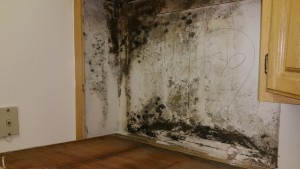Health Effects of Toxic Molds
Mold Inspections and Remediation in Anne Arundel County
Mycotoxins may cause a variety of short-term as well as long-term adverse health effects. This ranges from immediate toxic response and immune-suppression to the potential long-term carcinogenic effects. Symptoms due to mycotoxins or toxin containing airborne spores (particularly those of Stachybotrys) include dermatitis, recurring cold and flu-like symptoms, burning sore throat, headaches and excessive fatigue, diarrhea, and impaired or altered immune function. The ability of the body to fight off infectious diseases may be weakened resulting in opportunistic infections. Because these symptoms may also be caused by many other diseases, misdiagnoses of mycotoxin exposures are common. There are very few physicians with the experience or expertise in correctly diagnosing mycotoxin exposures or mycotoxicoses. Occupational or building-related exposures to mycotoxins through inhalation are slowly being recognized as a major indoor air quality problem. 
There are a host of fungi that are commonly found in ventilation systems and indoor environments. The Cladosporium and Aspergillus fungi make up 75% of the microbes. These organisms can occur naturally in the exterior environment and enter as spores or active fungi attached to dust particles. HEPA (high efficiency particulate air) filtration of incoming air and a regular program of maintenance and cleaning of ventilation ducts can reduce the levels of molds that may enter and multiply in the indoor environment. Damp areas such as basements and attic areas where water seepage or condensation may occur are prime growing areas for molds. Most will reproduce quickly if the temperature (the ideal temperature range is 68 to 86) and humidity conditions (70% or higher) are right.
The most common hazardous species associated with a water loss belong to the mold families: Aspergillus, Penicillium, Cladosporium, Mucor, Stachybotrys atra, Absidia, Alternaria, Fusarium and Cryptostroma. The greatest risks are caused by the Aspergillus and Penicillium strains. Various strains of these families of molds have been implicated in being causative agents in asthma, hypersensitivity pneumonitis and pulmonary mycosis.
Many species in the genera Aspergillus, Penicillium and Cladosporium are known to produce mycotoxins. These three groups of fungi are also very common indoors. Other toxigenic fungi frequently found indoors are Alternaria, Trichoderma, Fusarium, Paecilomyces, Chaetomium and Acremonium.
When discussing mycotoxins, species of Aspergillus deserve special attention. Species of Aspergillus produce such well-known toxins as aflatoxins, ochratoxins, and sterigmatoeystin. Aflatoxins that are produced by Aspergillus flavus and Asparasiticus are detected in stored peanuts and grains. Ochratoxins are produced by many species of Aspergillus as well as Penicillium. These fungi grow well on many common building materials that are soiled and contain higher than normal moisture content.
Allergic Fungal Sinusitis
Allergic fungal sinusitis (infection of the sinus) is a unique, under diagnosed condition similar to the lower airway disorder, allergic bronchopulmonary Aspergillosis. Characteristic features of fungal sinusitis are signs or symptoms of chronic sinusitis unresponsive to antibiotic therapy. The sinus contents in patients with fungal sinusitis contain allergic mucin, a thick cheese-like secretion, Charcot-Leyden crystals, and fungal elements. The fungi associated with this condition include Aspergillus, Curvularia, Drechslera, Bipolaris, Exserohilium, Alternaria, Helminthosporium, and Fusarium. (John W. Georgitis, MD, FCCP Professor of Pediatrics Wake Forest University Baptist Medical Center Winston-Salem, North Carolina.)
For immediate assistance call 301-725-6459 or Email us on our contact us page.
